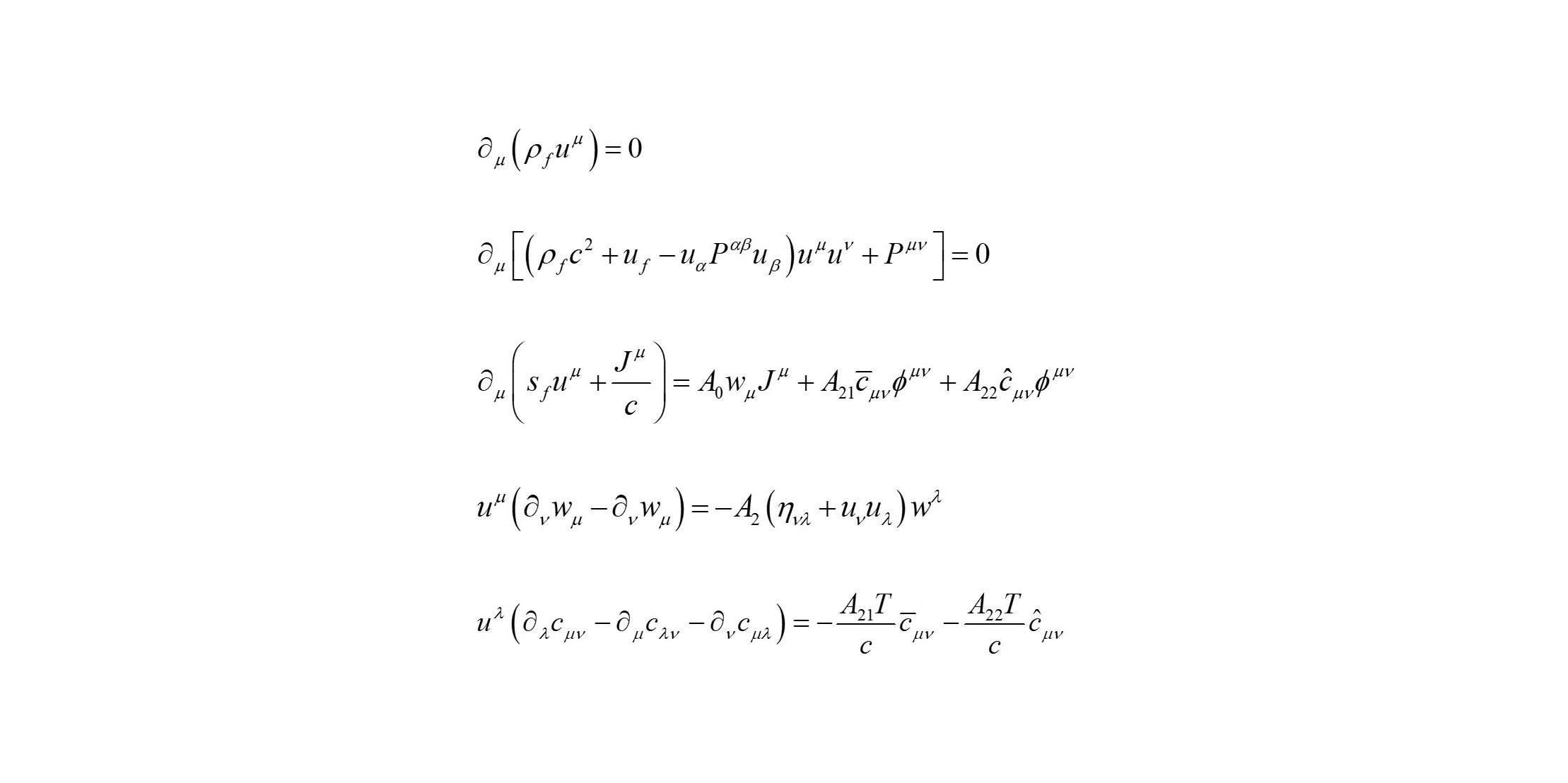Over the years, non-equilibrium thermodynamics has offered a systematic and solid framework for formulating time-evolution equations for fluids with a complex internal microstructure that are consistent with the fundamental laws of thermodynamics. Thanks, in particular, to some breakthrough developments in the last 20 years or so with the introduction of the Hamiltonian or single-generator bracket formalism by Beris and Edwards and of the GENERIC or double-generator (energy and entropy) formalism by Grmela and Öttinger, it became the horsepower for formulating transport phenomena for a great variety of complex systems.
In this article, Prof. Vlasis Mavrantzas shows that the same formalism can be used to formulate transport equations for relativistic fluids which are of paramount importance in astrophysics and cosmology (e.g., in the description of gravitational collapse leading to the formation of neutron stars). Through some elegant formulation involving four-vectors and four-by-four tensors, he shows that with the appropriate choice of the independent variables, of the Hamiltonian of the fluid which is represented by the time component of the energy-momentum tensor, of the Poisson and dissipation brackets, the postulate of a generalized (thermodynamic plus hydrodynamic) Euler equation and by appropriately restricting the form of dissipative rates, one can derive a set of manifest Lorentz-covariant equations for an imperfect fluid with viscosity, dilatational viscosity, and thermal conductivity.
The final relativistic equations are identical to those derived by Öttinger back in 1997 through GENERIC but the present approach seems to be more general in the sense that one could think of alternative forms of the phenomenological coefficients describing friction that could ensure Lorentz-covariance.
| Attachment | Size |
|---|---|
| 10.1515_jnet-2023-0068.pdf | 786.54 KB |









